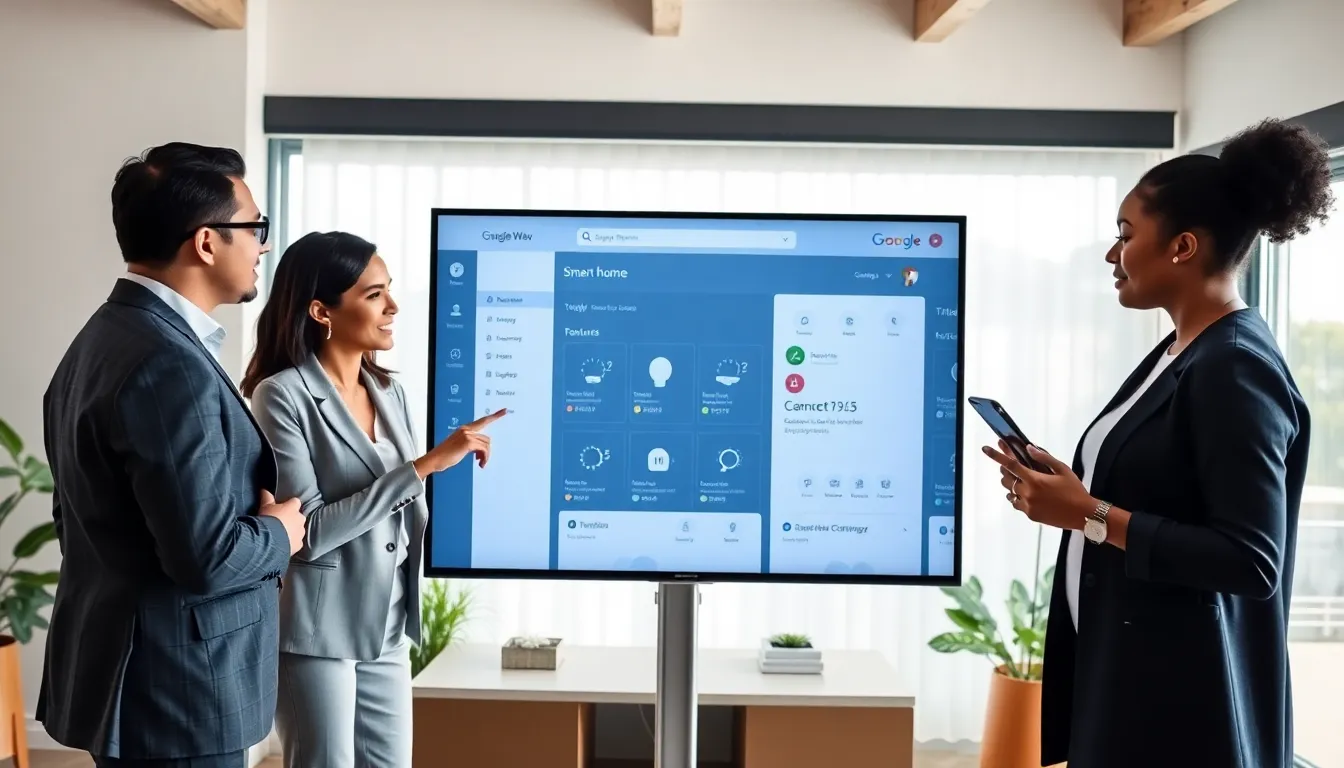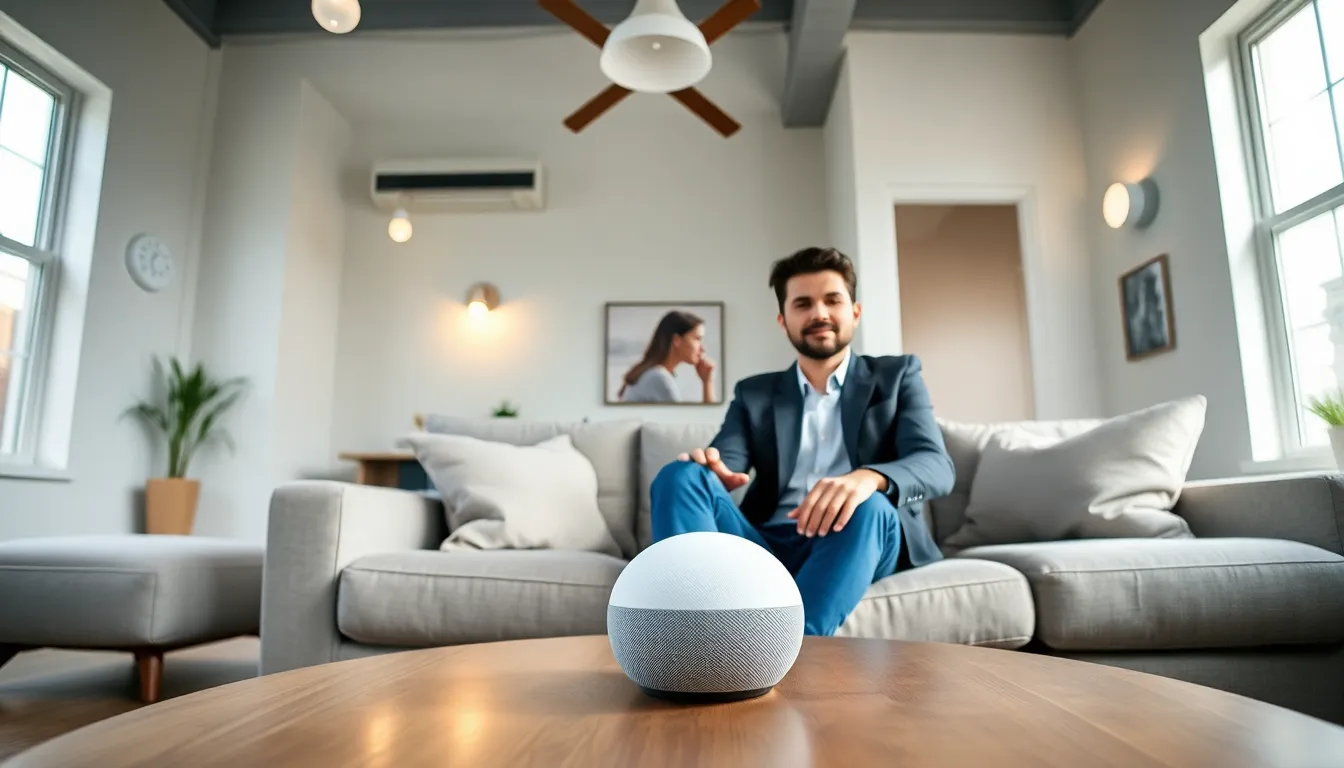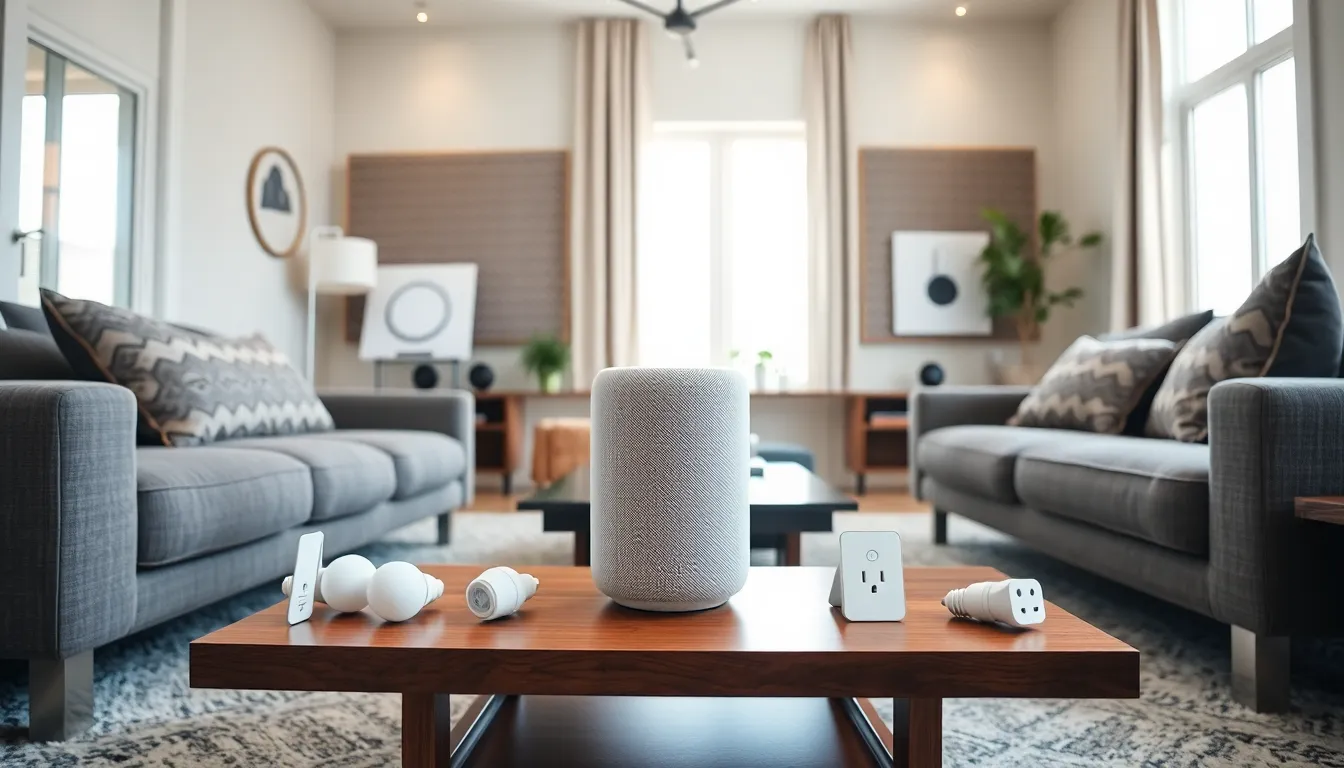Imagine coming home after a long day and simply saying, “Hey, Google, turn on the lights”. That’s the magic of Google Home Web. It’s not just an assistant: it’s your personal smart home maestro. In this guide, we’ll explore the ins and outs of Google Home Web, its features, setup tips, and even troubleshooting advice. So grab your favorite snack, sit back, and let’s jump into the wonderful world of Google Home Web.
Table of Contents
ToggleUnderstanding Google Home Web

What Is Google Home Web?
Google Home Web is an online interface that connects users to their Google Home smart devices. Through this platform, people can manage settings, control smart home devices, and access a world of smart features. Essentially, it’s like having a remote control for your home right at your fingertips.
Key Features of Google Home Web
Google Home Web comes packed with features that bring convenience and customization to the forefront. Users can control lighting, adjust thermostats, and manage smart appliances all from a single dashboard. Plus, it supports voice commands for an even smoother experience. The integration with various apps enhances entertainment options, making it a multimedia hub.
From setting routines to integrating third-party services, the possibilities are as wide as they are fun.
Setting Up Google Home Web
Step-by-Step Setup Process
Setting up Google Home Web is a breeze. First, download the Google Home app on your mobile device. Once you have the app installed, log into your Google account. Next, ensure your smart devices are powered on and connected to the same Wi-Fi network as your phone.
After that, open the Google Home app and follow the prompts to add devices. This often involves scanning for devices in the vicinity. Depending on your setup, you might need to link third-party accounts for specific smart devices. Once all devices are added, you can simplify the control process by grouping them based on rooms or functions.
This streamlined setup means users can enjoy their smart home experience without the tech headaches.
Troubleshooting Common Setup Issues
Though Google Home Web is designed to be user-friendly, setup issues can occasionally arise. If devices aren’t responding, the first step is to check the Wi-Fi connection. Devices must be on the same network to communicate effectively.
Next, try rebooting both the Google Home device and the router. Sometimes, a simple reset is all it takes. Finally, ensure that firmware updates are applied to smart devices. Following these troubleshooting tips can prevent many common headaches.
Using Google Home Web Effectively
Integrating Smart Home Devices
Once Google Home Web is set up, integrating additional smart home devices becomes effortless. Whether it’s lights, cameras, thermostats, or coffee makers, compatibility is essential. Most manufacturers support Google Assistant, making integration seamless.
Voice Commands and Control
Voice commands are the cornerstone of Google Home Web’s functionality. Commands like “Hey Google, set the thermostat to 72 degrees” or “Play jazz in the living room” are not just convenient, they also save time. Familiarizing oneself with the various commands can significantly enhance the user experience.
Managing Media and Entertainment
Google Home Web isn’t just about controlling devices: it also excels as a media hub. Users can manage music, podcasts, and even video streaming. Accessing services like Spotify or YouTube is just a voice command away, allowing personalized entertainment options tailored to individual tastes.
Enhancing Your Google Home Experience
Third-Party Integrations and Skills
Expanding functionality through third-party integrations is a game-changer. Skills can be added to Google Assistant for even more capabilities. From food delivery apps to security systems, these integrations enrich the Google Home Web experience. Users can easily browse a wide range of compatible services and find those that fit their lifestyle.
Tips for Optimizing Performance
To maximize the efficiency of Google Home Web, regular maintenance is helpful. Periodically review connected devices and remove any that are unused. Also, ensuring that all smart devices and the Google Home app are updated will prevent performance issues. Simple habits like voice training for better recognition can also enhance user satisfaction.








